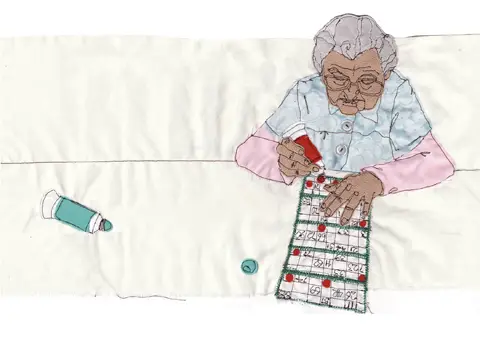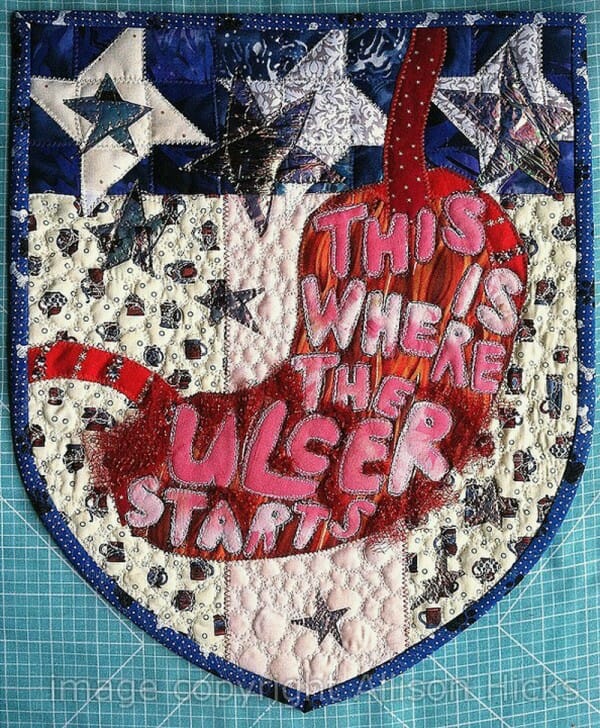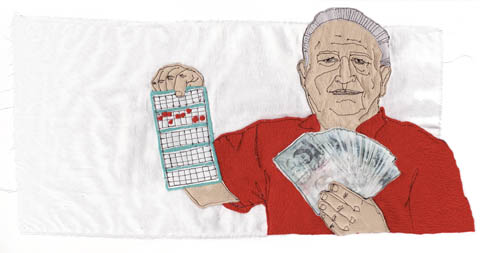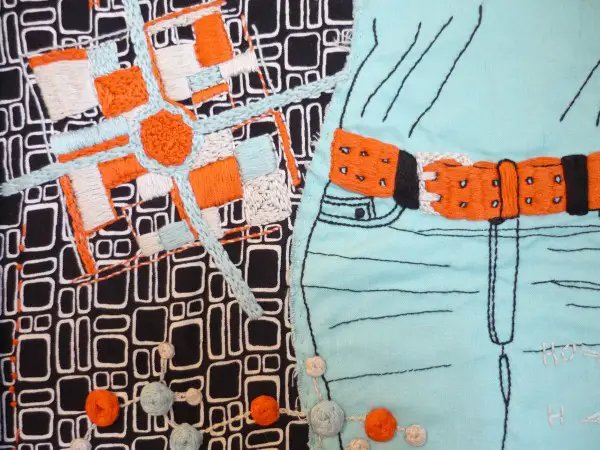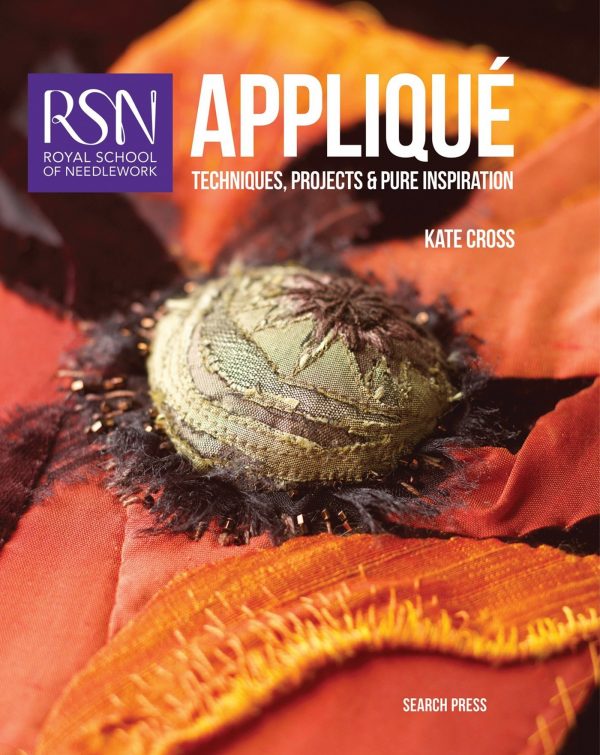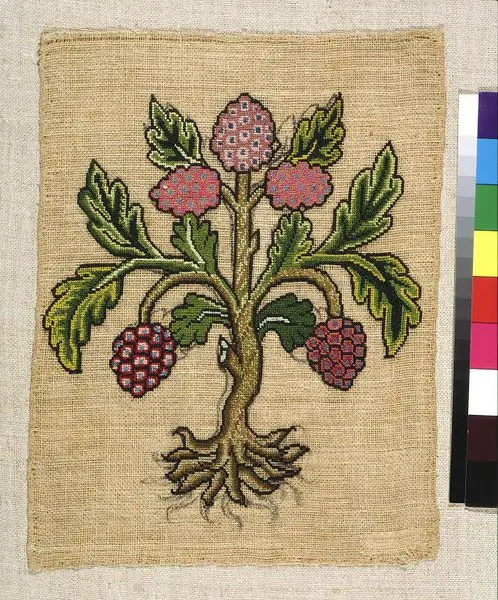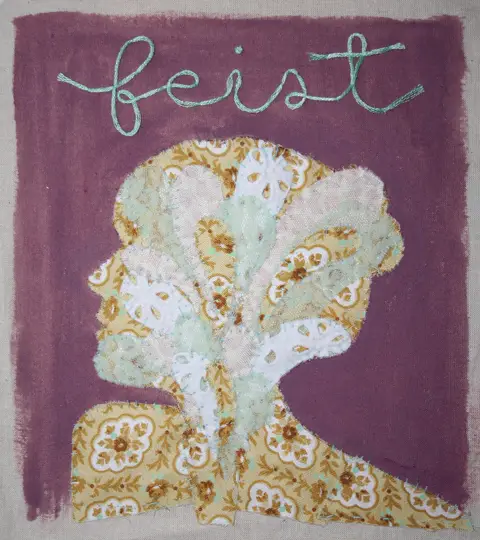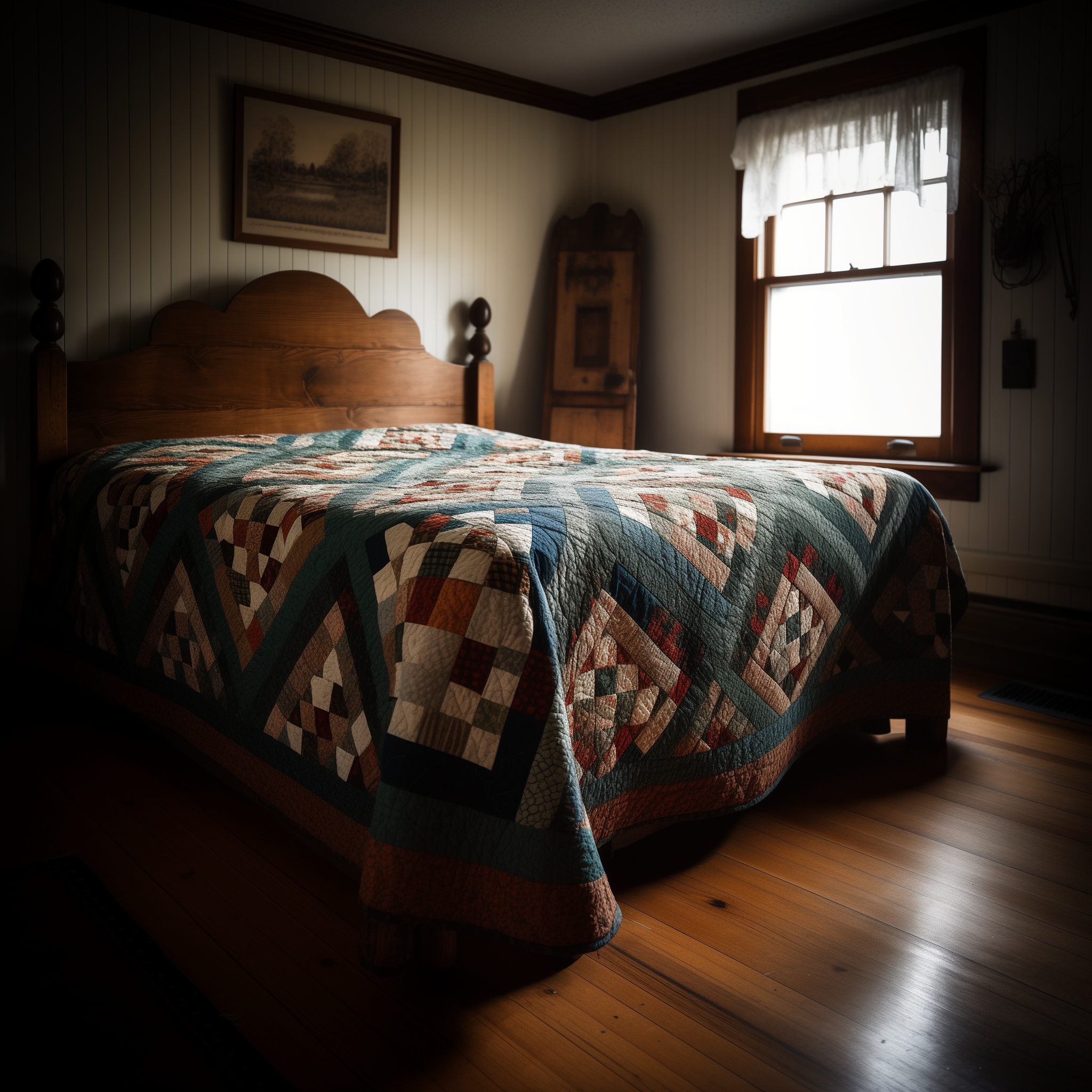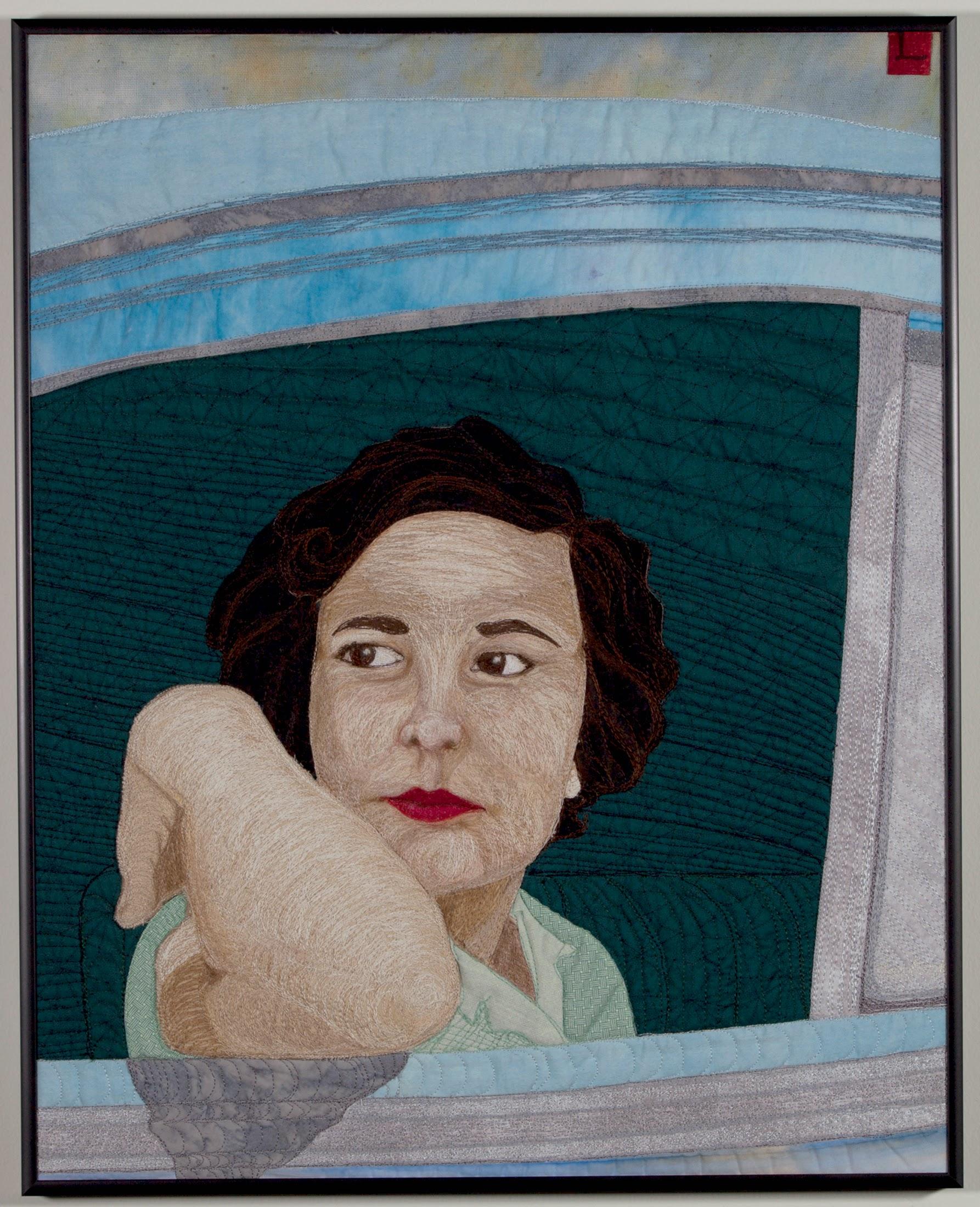
Welcome to Ask Mr X, a series where we answer your embroidery and textile art questions.
It is okay if you are confused between patchwork and appliqué work, it can be a little puzzling if you’re new to this. But I’m here to show you the difference so you can get your textile art on with confidence!
In both patchwork and appliqué, you take small pieces of the fabric and sew them together. Patchwork connects pieces without using a background fabric, which is what happens with appliqué. Stitches can be felt underneath patchwork but a fabric covers it up in appliqué.
It’s not unreasonable to assume that they are the same things, however these techniques came into existence through different necessities in time – patchwork quilts are a significant part of our cultural story. One thing is certain, if you learn one you gain a headstart in accomplishing projects in the other.
In this article, I will introduce you to both patchwork and appliqué work, and what separates them in the arts. So, without further ado, let’s start!
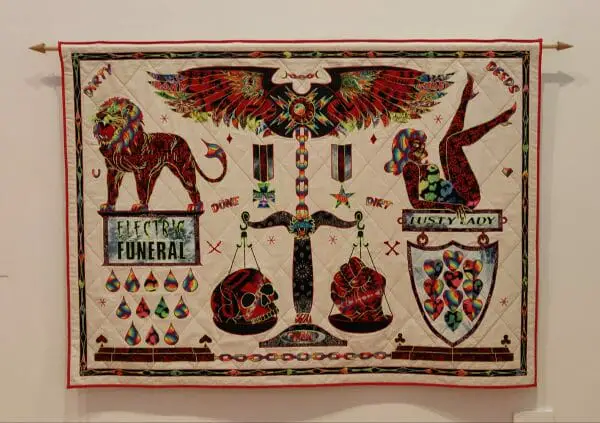
What is Patchwork?
For quilters, patchwork refers to piecing together fabric from smaller pieces. These smaller pieces are sewn together and are called patches, hence the term patchwork. This is also why it is called piecework.
There are no rules on how the pieces of fabric are pieced together or what types of fabrics should be joined; it is dependent on your imagination. You can put them together in squares, rectangles, triangles, hexagons or other shapes in either a planned manner or in random order.
Identical fabric pieces can be used to make a larger mosaic, and there is no end to the scale you can achieve. It is often the norm to create small sections, which can then be joined together to form a bigger canvas.
Think of it as a building block. You can use the blocks like you wish to and the end result is the creation of your imagination. Although patchwork has its roots in quilting, it has not found use in the production of garments, handbags, and various other projects.
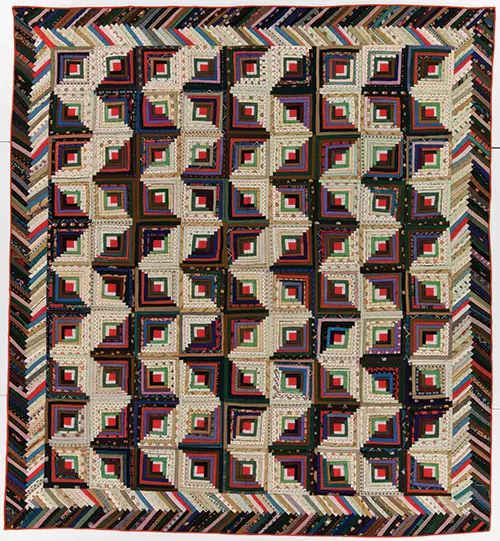
Common Methods of Patchwork
Cutting the fabric is the first step and the easy part, joining it together is where the hard work lies. There are high-speed assembly methods available or you can go at your leisurely pace; it is all dependent on how you want to realize your idea. Some common methods of piecework are chain piecing and strip piecing.
Chain piecing is the most common method, where straight edged pieces are sewn together. You can hand sew or use a stitching machine to sew the straight edges. A backstitch is then used to sew the pieces together. Ben Venom’s example shows chain piecing using a tight machine stitch to join the pieces.
A quicker of completing your patchwork project is to employ strip piecing. Fabrics are joined together, cut apart, and then joined together in a pattern of choice – this is a classic method used in log cabin quilts like the one above.
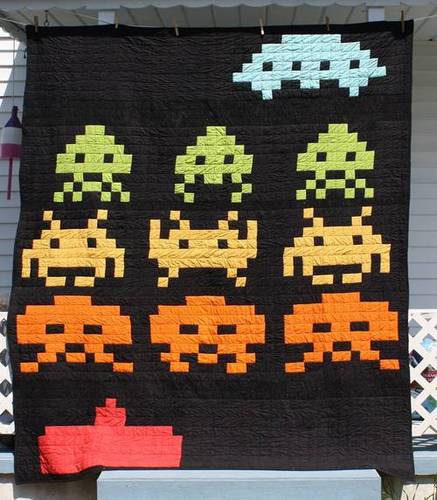
What are the different types of patchwork?
There is a huge variety of patchwork types and you will find more as you dive into the world of quilting. Usually, patchwork blocks are sorted in a manner that gives you an idea about their structure from their names.
One of the most common types is the one patch. Here the same shape is repeated to form a pattern.
Four patch blocks, as the name suggests are made up of four fabric pieces. Different shapes can be employed and sorted in multiple segments to form the patchwork.
Five patch blocks different from the predecessors, as they are actually made up of 25 patches, five are sewn across and five are sewn down. Similarly, there are seven and nine patch blocks.
What is Appliqué?
Traditionally, appliqué was usually done with felt, fleece, and quilting cotton fabrics. However, it be used with any number of fabric materials. In this technique, pieces are sewn on another piece to form decorative patterns.
You do not have to sew many different pieces together to create appliqué. The base fabric is your canvas and you can sew any patterns of your choice with any fabric that you want. In the modern approach to appliqué, the fabric is not a necessity, and beads, sequins, or other decorative items can also be used. It is a very useful mixed media technique and we’ve got many examples of appliqué art throughout the site.
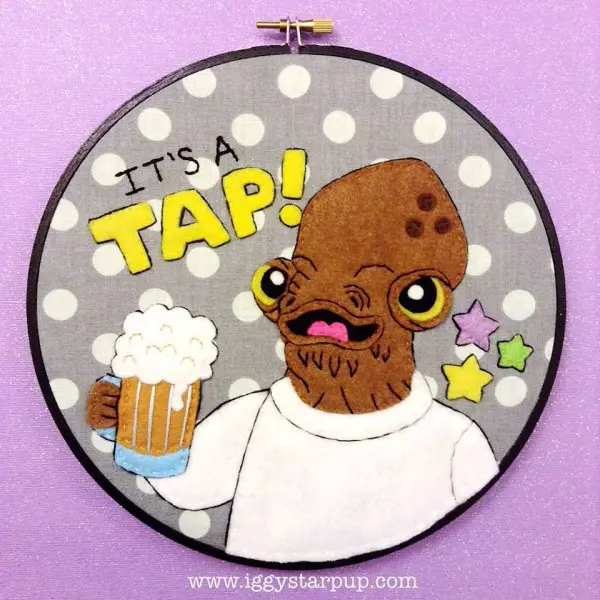
Methods of Appliqué
Textile artists have an array of tools on their hands for appliqué but the methods of application can be simplified into three methods:
- Sewing through hand embroidery
- Using machine embroidery
- Using fusible materials to bond surfaces
While there are no wrong ways, machine appliqué is the popular choice for obvious reasons; it is fast and gives you a range of choices to work with. You can use pre-cut shapes and then stitch them around the edges to connect them to the base layer. Modern machines have a wide variety of stitches you can try to produce different decorative effects and it is a good place to start if you’re getting into appliqué.
With hand appliqué, you get more flexibility with your stitch patterns, but from a technical standpoint, using hand stitching may depend on your level of experience, as it is time consuming and can be hard going if you are using robust fabrics. The needle-turn method is one of the more well-known methods for hand appliqué. The biggest positive is that it allows one to easily add embellishments to the design.
Recently, fused appliqué has gained traction as a really fast solution. It allows you to use iron-on adhesives to create designs. While it means you can produce applique art in short order, you should remember that end-products of fused appliqués are not very long-lasting.
What are the different types of appliqué?
Just like the different methods of application, there are several different techniques for appliqué in quilting. The goal for quilters is to use a range of fabrics to make the most of the canvas to create beautiful personal pieces of work.
One of the more famous techniques amongst appliqué enthusiasts is the smooth edge. It allows one to smoothen the raw edges with stitch thread while maintaining the integrity of the cut cloth.
In raw-edge appliqué, the reverse is chosen as the way forward. It is usually picked for smaller projects and the appliqued edges are kept as is.
The multi-needle hoop appliqué is an advanced machine technique method. It allows one to place designs across the base fabric in a pattern. Once the machine stitching is completed, it does not require more attention. Similarly, reverse appliqué allows one to sew fabrics on each other, and cut-offs from the top layer allow a design from the bottom to appear.
Differences between appliqué and patchwork
Patchwork is the process through which the fabric for quilting is produced. The fabric is constructed from pieces and is planned to achieve the desired design. It is not the finished product and has yet to undergo the quilting process. It is one of the first processes during quilting.
On the other hand, appliqué is the process that comes at the end of the production phase. Like patchwork, fabric pieces are sewn together but this is not a mosaic of fabrics, more like attachments on a canvas. Small fabric pieces can be sewn together like patchwork but they have to have a fabric on which they are attached together.
Patchwork can be applied to quilts but their utility is not limited to them. They can be adorned on bags, wall-hangings, jackets, covers, and other clothing items. Along with embroidery, they produce unique items that give value that is different from the base materials that make the foundation in the first place.
While the utility for appliqué is the same on quilts, handbags, and clutches, it is their application at the end of the production process that is the difference. You can create shapes from fabrics and sew them on to give a bland piece of clothing an identity of its own.
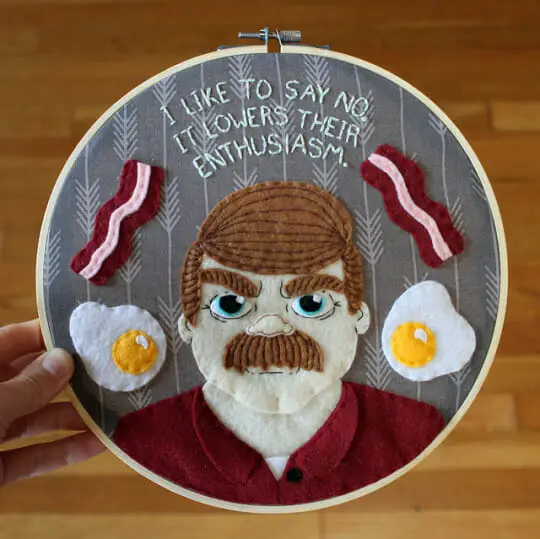
Let’s recap!
- Sew one layer of fabric on another and you are involved in appliqué.
- Sew two fabrics together and it is patchwork. The designs can be similar and they may overlap.
- If you are sewing different fabrics together and then putting that patch on a base fabric, you are using both techniques to realize your creation. The difference between the two may seem minor but in the vast art space of quilting, it is huge.
For many textile artists, it is the application of different techniques together that allows their creative juices to flow. Don’t allow the jargon to hold you back, plan your design, and use the techniques to good effect. You may find that by planning out the ideas you are naturally led towards patchwork, or towards appliqué – try not to overthink it, just know that these techniques are fairly simple to grasp and that you have the power to make amazing art of your own!
What Technique Is This?
This is appliqué, one of the most popular way of using fabric to create textile art. There are a few types of appliqué that you can try, and if you need help starting we recommend the Royal School of Needlework’s book.
Appliqué is different to patchwork, in case you were wondering, and if you want some appliqué inspiration, here are some posts to check out!

